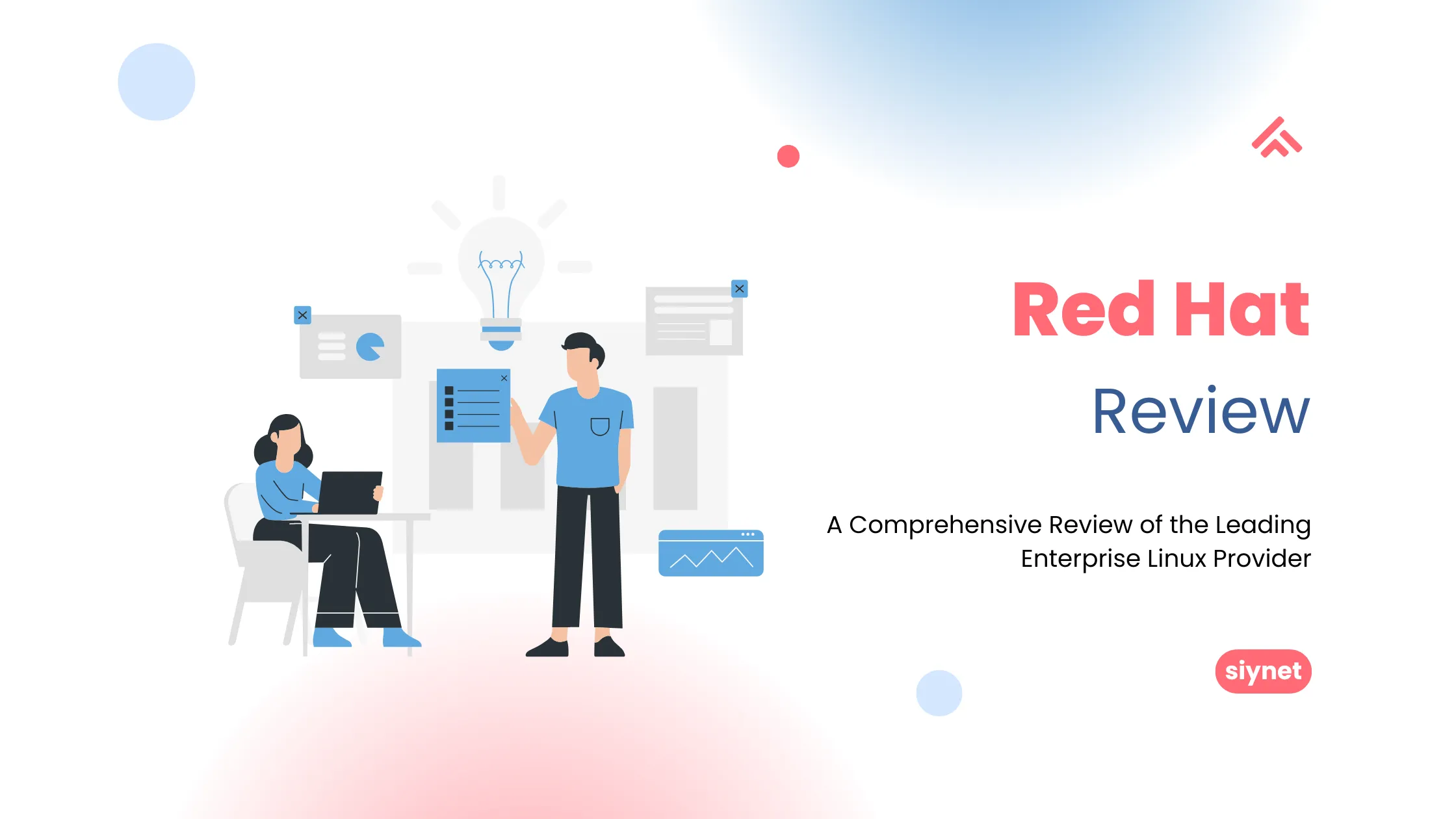
In this Red Hat review, we take a closer look at one of the most influential open-source companies in enterprise IT. From Red Hat Enterprise Linux (RHEL) to OpenShift and Ansible, Red Hat offers a broad portfolio designed for businesses that require stability, security, and scalability.
Overview of Red Hat
Red Hat was founded in 1993 by Bob Young and Marc Ewing. Since then, the company has grown into a global leader in open-source software. It builds solutions that are collaborative, transparent, and community-driven. Although now a part of IBM, Red Hat continues to operate independently and earns the trust of businesses of all sizes.
Core Offerings in This Red Hat Review
🔹 Red Hat Enterprise Linux (RHEL)
RHEL provides a stable, secure Linux distribution made for enterprises. It supports everything from legacy applications to modern cloud-native workloads.
🔹 OpenShift
OpenShift serves as Red Hat’s powerful Kubernetes-based platform. It simplifies container management and accelerates app delivery.
🔹 Ansible
Ansible enables IT automation with ease. It allows teams to manage configurations, deploy applications, and automate infrastructure tasks efficiently.
🔹 Red Hat OpenStack
This platform empowers companies to build public or private clouds using open-source tools.
🔹 Red Hat Middleware
Red Hat supports developers through Java-based services like JBoss that help create scalable applications.
🔹 Red Hat Virtualization
RHV enables businesses to run virtual machines with strong performance and simplified management.
Red Hat Enterprise Linux (RHEL): The Foundation of Red Hat
At the center of this Red Hat review is RHEL. It’s designed for businesses that demand uptime, security, and professional support.
✅ Key Strengths of RHEL
- Stability and Security: Red Hat delivers regular patches and updates on a predictable release schedule.
- Enterprise Support: The company offers 24/7 expert assistance, which is essential for mission-critical systems.
- Broad Compatibility: RHEL works well with most hardware, cloud providers, and third-party applications.
- Open-Source Backing: A large developer and sysadmin community actively contributes to its growth.
⚠️ Areas for Improvement
- Cost: RHEL can be pricey, especially for startups and small companies.
- Learning Curve: Its tools are designed for advanced users, making it less beginner-friendly.
OpenShift: Kubernetes Simplified
OpenShift builds on Kubernetes and adds developer-friendly features along with strong security enhancements.
✅ Strengths of OpenShift
- Boosts Productivity: Developers can deploy and manage apps quickly using the graphical interface and built-in CI/CD tools.
- Security Built-In: It includes SELinux, RBAC, and default container isolation policies.
- Strong Enterprise Support: Customers benefit from Red Hat’s renowned documentation and technical guidance.
⚠️ Areas for Improvement
- Initial Complexity: Teams still need to understand containers and DevOps principles.
- Customization Limits: Some teams may find OpenShift’s preconfigured structure too restrictive for highly tailored workflows.
Ansible: Red Hat’s Automation Powerhouse
Ansible stands out for its easy-to-learn syntax and flexibility. It simplifies tasks ranging from cloud provisioning to app deployment.
✅ Benefits of Ansible
- Human-Readable YAML Syntax: It suits both sysadmins and developers.
- Agentless by Design: Teams don’t need to install software on target machines, reducing overhead.
- Good Integration: It works smoothly with Red Hat tools and many third-party platforms.
⚠️ Drawbacks
- Scaling Needs Tweaks: Managing large-scale infrastructure may require additional tuning.
- Advanced Tasks Take Time: Complex workflows can demand a deeper understanding of Ansible internals.
Red Hat’s Commitment to Open Source and Cloud
Red Hat plays a key role in major open-source projects like Linux, Kubernetes, and OpenStack. Its tools help companies transition smoothly into hybrid and multi-cloud environments.
☁️ Cloud Strategy in Brief
Since IBM’s acquisition, Red Hat has gained strength in the hybrid cloud space. OpenShift supports AWS, Azure, Google Cloud, and on-prem setups, allowing full flexibility. Moreover, Red Hat and IBM now offer integrated solutions for companies modernizing their tech stacks.
Summary: Strengths and Weaknesses at a Glance
💪 Strengths
- Industry-leading support and uptime
- Focus on long-term security and patching
- Trusted name in the open-source ecosystem
⚠️ Weaknesses
- Higher price compared to alternatives
- Complex setup and operations for beginners
Final Thoughts on This Red Hat Review
This Red Hat review highlights the company’s leadership in enterprise open-source solutions. Tools like RHEL, OpenShift, and Ansible offer unmatched reliability, automation, and support. While pricing and complexity may not suit every organization, the value these tools provide to large and mid-sized enterprises is significant.
Ultimately, for companies running critical workloads and looking for scalable IT environments, Red Hat remains one of the top choices in the industry.


Leave a Reply